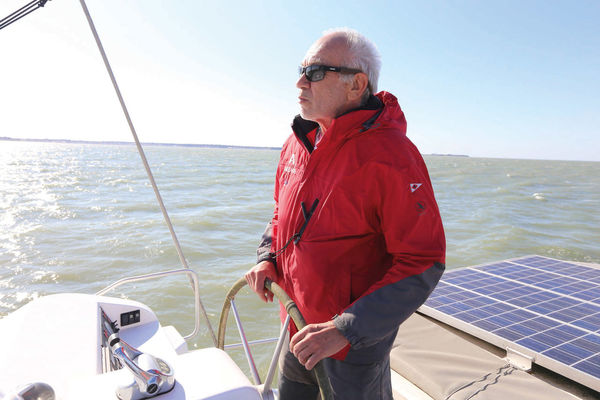
Issue #: 178
Published: July / August 2021
- Price per issue - digital : 6.50€Digital magazine
- Price per issue - print : 8.50€Print magazine
- Access to Multihulls World digital archives Digital archives
The name Nivelt will forever be associated with his accomplice Michel Joubert, who passed away in 2016. However, the path taken by this naval architect is quite singular. It was pretty unusual to be discovering sailing on a multihull back in the 1960s. All this in a family context that was as instrumental as it was crazy!

When his father decided to build a GRP catamaran in the family’s living room in Courbevoie, near Paris, Bernard Nivelt was still in elementary school. Alerted by the smell of styrene that the young boy gave off, the school’s management summoned his parents... An anecdote that did not prevent Bernard from taking to the water for his first sail aboard that Exocet, which had been “home-designed and built”. His studies? A bit «chaotic»: although kicked out of the INSA Lyon engineering school, «which is still an achievement», Bernard completed a DEA (now known as a master’s degree) on methods of drawing shapes with computers. Partnering with Michel Joubert in 1974, Bernard (or rather the famous Joubert/Nivelt tandem) achieved a prestigious victory in the Admiral’s Cup with Diva in 1983. Despite all the international recognition, Bernard was really just interested in multihull sailing, which was taking off in France. Among the group of friends with whom he raced, there was a certain Jean-François Fountaine. They decided to build «a big 20-meter Hobie Cat» to compete in the major ocean races of the time: this would be CharentesMaritimes. Fascinated by the average speeds achieved, the comfort at sea and the ability to be proactive in relation to the weather, they launched the Louisiana. This was the beginning of a long collaboration with the Fountaine Pajot shipyard, even though the charter market was to deviate the initial concept somewhat
In the meantime, Bernard moved to the United States with his family, without imagining that in 1986 John Marshall, Dennis Conner’s right-hand man, would co-opt him to join the Stars & Stripes US-1 design team! It was a six-month, top-secret commando mission, with the objective of designing a 60-foot Tornado! Two rigs were studied: one classic, the other a revolutionary rigid wing, designed by the craziest engineers on the planet. Apart from this extreme rig, the project, which won against the giant New Zealand monohull in 1988, reflects the architect’s «multihull philosophy»: finesse, lightness and sobriety. This guiding idea is perfectly illustrated by the JNP 60 that Marc Pinta, a boatbuilding magician from La Rochelle, would construct. This unit would go on to inspire many boat builders in the day-charter market.
Bernard’s open mind also led to him designing a motor catamaran that really made its mark. Not very fond of long passages, his client wanted a sailing multihull because he thought it would be cheaper in the long run. The architect’s response: «But I can design you a motor catamaran that consumes very little fuel, and what you save on the mast, the sails, the deck hardware, the structure... is equivalent to three round-the-world voyages!» The highly innovative Santorini, «a boat with a 15-meter boat layout, but a 20-meter hull length,» was launched in 1998. This multihull made a big impression on the editorial staff here at the magazine (see the article in MW060). «A boat that I would like to ...
What readers think
Post a comment
No comments to show.